Glasgow is often painted as the smaller, less sophisticated sibling of scotland’s ancient and elegant capital, Edinburgh. But like so many little sisters, she possesses charms that makes comparison irrelevant.
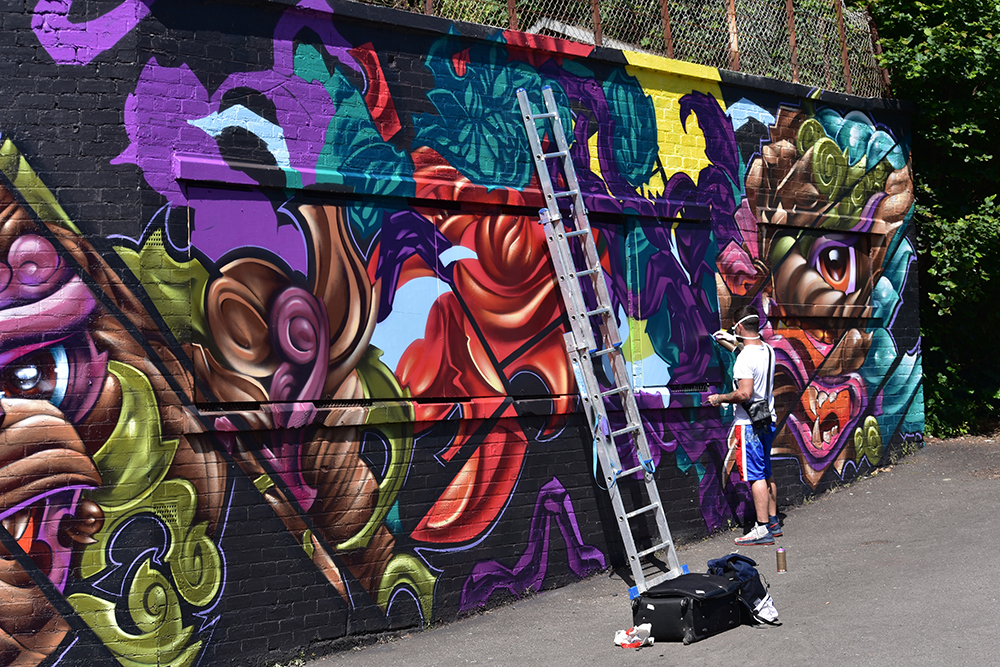
A young artist brightening a dull corner of Glasgow. Photo by John Baumann.
Getting to know Glasgow
Handsome and historic, Glasgow’s current personality—a youthful, culture-rich and eco-friendly urban centre—is rooted in planning decisions made in the 80s, when the industrial life of the city, based on shipyards, foundries, factories, mills and brickworks, was in decline.
Civic leaders focused on Glasgow’s Victorian architectural riches and well-designed public spaces to promote it as a liveable, affordable city that also works as a great tourist destination.
The city pulses with friendly energy; everyone chats, says hello, and offers directions or tips on where to eat or drink. It’s also a city of surprises: look up and there’s a perfectly intact art deco mansion; just around the corner, colour-soaked street art.
Glasgow is home to artists, festivals, performances, galleries, monuments, international design studios and a culinary scene that mirrors the delicious diversity of a port city.
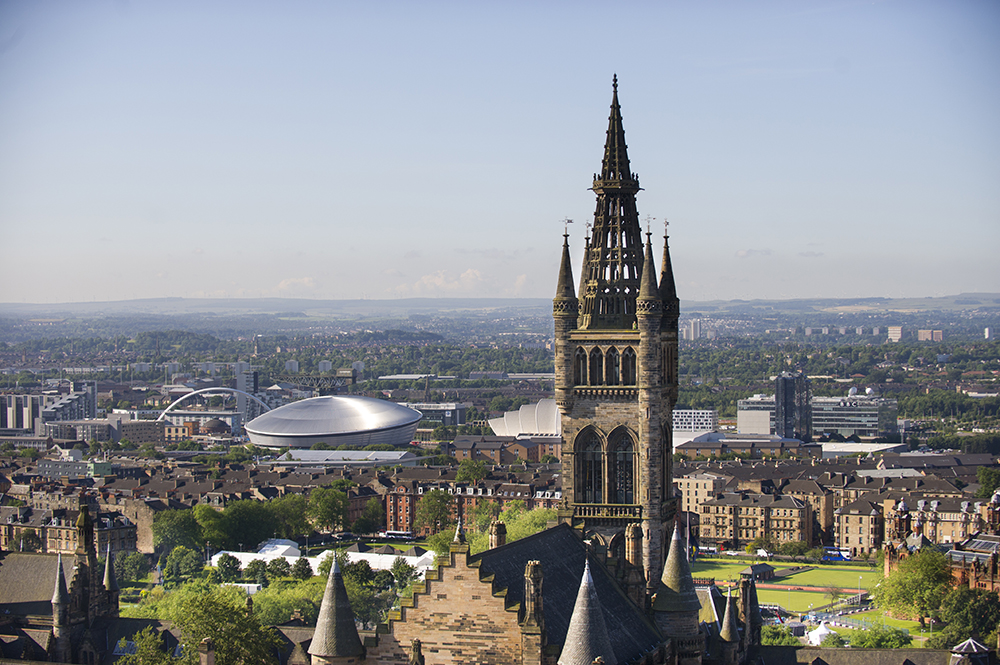
An aerial view from the University of Glasgow Tower reflects how well the city blends the old with the new. Photo courtesy of University of Glasgow.
Architectural, artistic and cultural prowess is everywhere you look
This year is the 150th birthday of one of Glasgow’s most famous sons, architect and artist Charles Rennie Mackintosh, the local design hero whose work and contribution to the “Glasgow style” is internationally recognized.
A tour of the city structured around his works and influences could start, perhaps, with a visit to Mackintosh House on the University of Glasgow grounds, a painstaking recreation of the home he shared in the West End with his wife, artist and designer Margaret Macdonald Mackintosh.
After you’ve seen it, you will probably want to head out—though probably on another day—to the House for an Art Lover, the impossibly lovely recreation of a 1901 Mackintosh design created for a competition hosted by a German art magazine. Allow time to stroll through the grounds and take tea on the terrace.
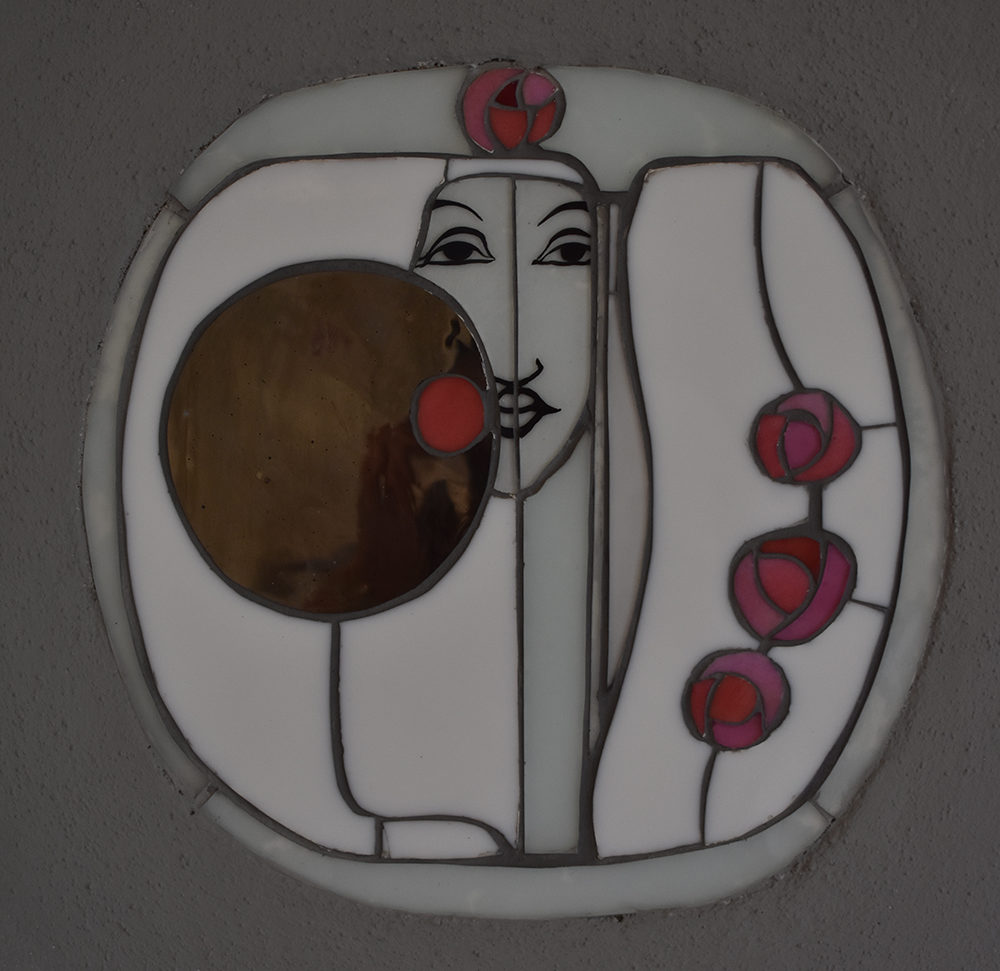
Many of the design details at House for an Art Lover are the work of Margaret Macdonald Mackintosh. Photo by John Baumann.
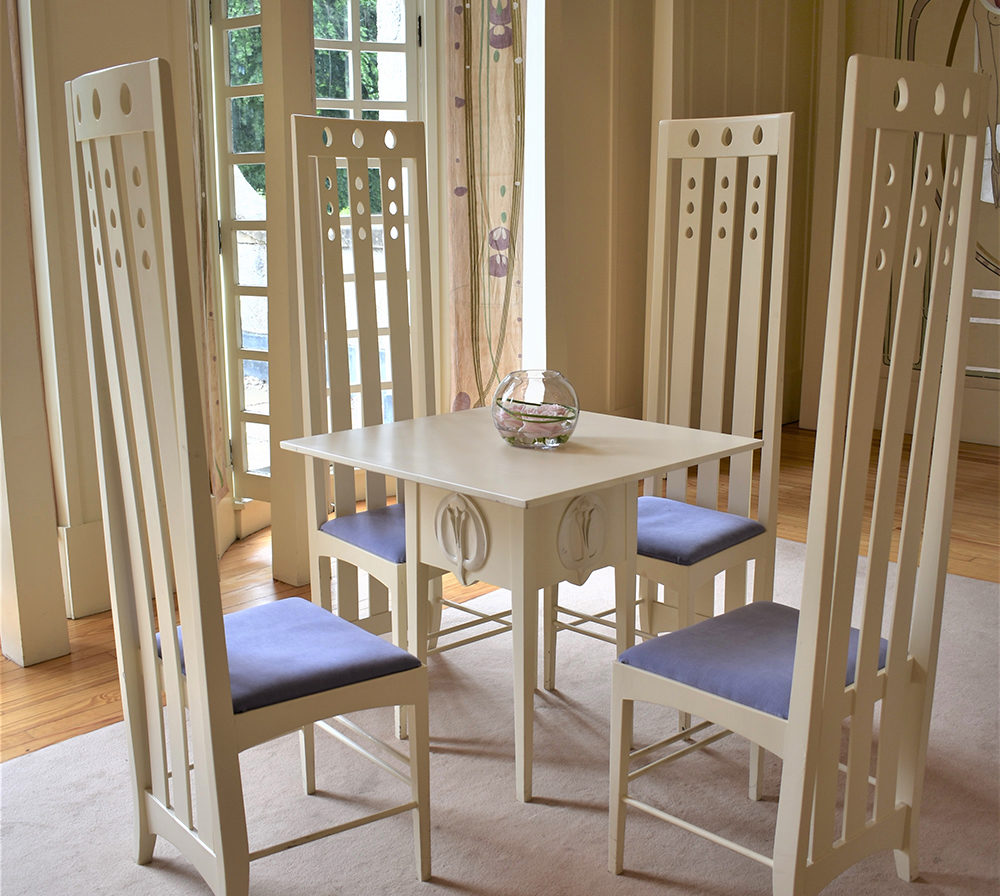
The elongated lines on music room chairs are typical of Mackintosh. Photo by John Baumann.
The Glasgow Botanic Gardens, founded in 1817 by local botanist Thomas Hopkirk, also has a link to the university; Hopkirk once provided plants for study.
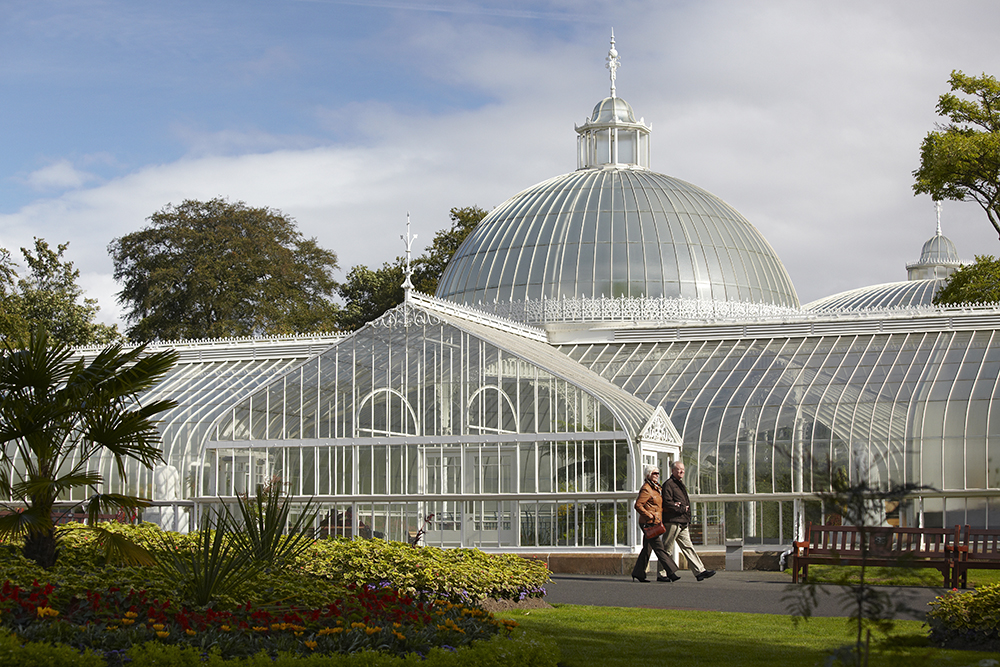
A series of glass houses in the Botanic Garden hold plants from around the world. Photo courtesy of Glasgow Life
The gates of the garden are fronted by the quirky, bohemian Great Western Road. There, the city’s centuries-old connection with the textile and design industry lives on in storefronts, such as Timorous Beasties, owned by Glasgow School of Art alumni Alistair McAuley and Paul Simmons.
The duo’s widely inventive and wholly beautiful wallpaper and textiles include gorgeous toiles that reflect Glasgow’s grittier side. Further out from the centre of the city, they have a local studio where hand-printing and custom work is still done.
There’s also the Hunterian Museum, whose main-floor natural history exhibit includes many treasures, like a collection of wonderfully sculptural birds’ nests from around the world.
The second floor catalogues the city’s illustrious scientific, manufacturing and technical achievements, and contains inventions by Sir William Thomson (or Lord Kelvin, a name that will ring a bell with students of science.)
Just across the street is the Hunterian Art Gallery, which houses works from Rubens to Rembrandt, the world’s largest permanent display of the work of James McNeill Whistler and the largest single holding of Mackintosh’s work. When you leave, say a silent thank you to Dr. William Hunter (1718 – 1783), the pioneering obstetrician, teacher and passionate amateur collector whose donation anchors both institutions.
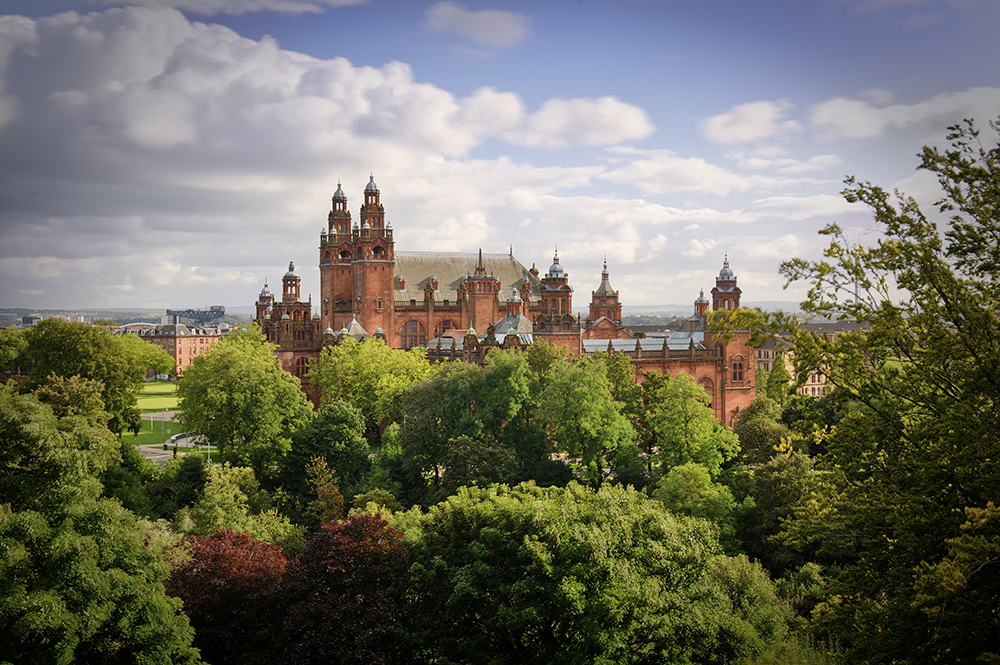
The famous Kelvingrove Museum abuts the 85-acre Kelvingrove Park, a classic example of a Victorian park. Photo courtesy of Glasgow Life.
The Kelvingrove Art Gallery and Museum is a must-see, both for its architecture and collections. Follow the visit with a walk through Kelvingrove Park, filled with lush greenery, and imposing statues and fountains.
Across town is The Tenement House, which offers a fascinating view of a multi-family dwelling in late 19th century Glasgow. After touring the four painstakingly restored rooms, take a short walk to Kate Cranston’s The Willow Tea Rooms, originally designed by Mackintosh in 1903 and slated to reopen in September 2018.
Glasgow’s food and drink scene is thriving
Another myth about Scotland in general and Glasgow in particular is that the cuisine is less than haute.
Places like Number 16, a quaint and cozy bistro on funky Byres Road, knock that notion down. An interesting, inventive menu is based on local ingredients, some of which are sourced by French forager Maxime Jay, and includes flavourful vegan and vegetarian offerings.
Fresh, regional ingredients are a recurring theme on the local restaurant scene, including dishes on offer at the Ox and Finch, where design balances rustic woods and industrial metals in a space flooded with natural light from an expanse of windows overlooking colourful Sauchiehall Street. The format is contemporary, small-plate dining—dishes are meant to be shared. It’s an ideal way for a couple to sample the menu, which also includes lots of options for both vegetarians and vegans that split nicely into two portions.
For a truly special meal, there’s Cail Bruich, where chef Chris Charalambous combines a modern take on Scottish cuisine with exceptionally well-executed classical cooking techniques, using fresh, local and seasonal ingredients. The décor and atmosphere is casual, but the service is impeccable. If you go, enhance the experience by consulting with the friendly, unpretentious sommelier for the perfect complement to your meal.
Clydeside Distillery has been run by a family since 1925. A guided tour provides insight into the city’s history as a port, as well as one of its main commodities, whisky, which spurred civic-minded citizens to advocate for regulation against poor-quality (and sometimes dangerous) blends. The tour ends with a whisky tasting.
Where to shop
If shopping is on the to-do list, visit the steeply sloped Buchanan Street. The car-free high street is also just a quick walk from the cheeky, thought-provoking Gallery of Modern Art, Glasgow.
Where to stay
Hotel accommodation at all price points is available, but the brand-new Radisson Red is very contemporary and very cheerful—the design includes drawings on walls and furniture from renowned comic book artist Vincent Deighan (aka Frank Quitely). There’s also a rooftop bar with great views and a casual, canteen-style restaurant that’s open all day. The hotel is also conveniently located, being a short walk from Scotland’s largest exhibition centre, the Scottish Event Campus, and on one of the stops for the hop on/hop off bus.
Getting around
The city is easy and safe to move about in, on foot (the speed limit in the city centre is 20 miles per hour), bus, taxi or a teeny-tiny subway, the third oldest in western Europe, after Budapest and London.
Vicky Sanderson
Latest posts by Vicky Sanderson (see all)
- How Food Tourism is Feeding Understanding of Canadian Indigenous Culture - October 24, 2019
- A Keen Eye: Exploring the Streets of Glasgow Through the Lens of Design - October 2, 2018









No Responses to “A Keen Eye: Exploring the Streets of Glasgow Through the Lens of Design”